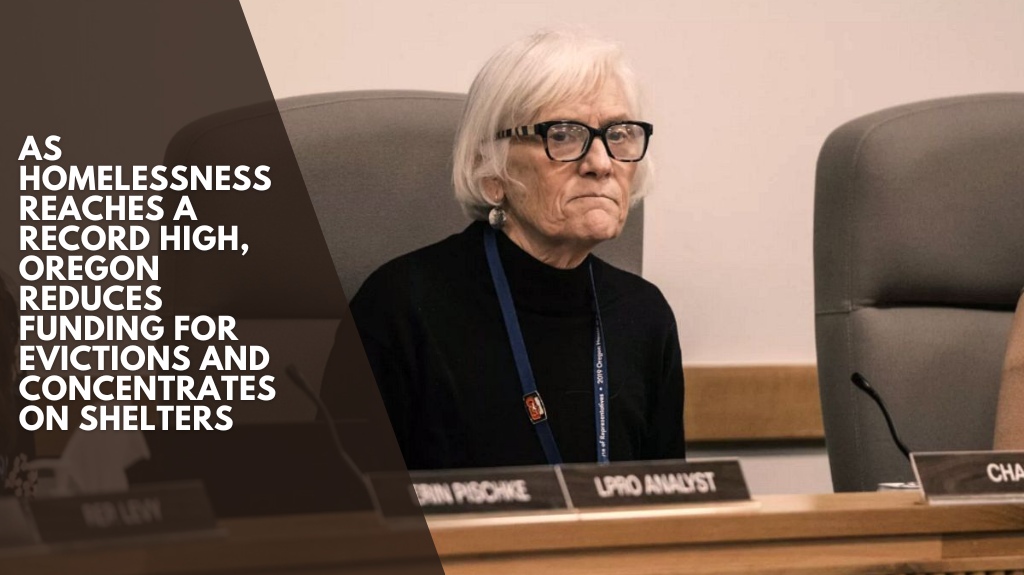As homelessness rates in Oregon rise, lawmakers have cut funding for eviction prevention and affordable housing services in favor of temporary shelters. Despite the urgent need, the state’s 2025 housing budget reduces nearly $1 billion from the previous biennium while establishing a new statewide shelter network and expanding some tenant protections.
Housing Crisis Deepens
Oregon is experiencing one of the worst homelessness crises in decades. According to Portland State University’s 2024 homelessness report, the number of people experiencing sheltered homelessness increased by 24% in a single year, marking the largest increase since 2007.
Governor Tina Kotek declared a homelessness emergency on her first day in office and extended it until early 2026.
Eviction filings have also increased, nearly doubling since 2019. Despite this, eviction prevention programs saw their funding reduced from a proposed $173 million to $33.6 million in the new budget.
Budget Cuts Amid Crisis
House Bill 5011, which passed during the 2025 legislative session, reduced the Housing and Community Services Department’s budget from $3.6 billion to $2.6 billion over the next two years.
The majority of the funds will go toward shelter services, rental assistance, and disaster recovery. Advocates slammed the decision, warning that it ignores proven, long-term housing solutions in favor of temporary fixes.
“Sadly, in a tight budget year, we were not able to fund housing and homelessness programs to the full extent proposed by the Governor,” Rep. Pam Marsh, D-Ashland, told Street Roots.
Funds Prioritize Shelters
Despite national research confirming that permanent housing is the most effective way to end homelessness, Oregon lawmakers directed the majority of the budget toward temporary shelters.
A 2024 Portland State University study found that tiny home villages and motel shelters outperformed congregate shelters in terms of long-term outcomes, which is consistent with previous years’ findings.
Statewide Shelter System Launched
House Bill 3644 established a formal statewide shelter program under the Housing and Community Services Department (HCSD).
Regional coordinators will oversee funds for local shelter programs, with 70% set aside for low-barrier, 24/7 shelters and the remainder for recovery-based and culturally specific shelters.
“We haven’t solved all the problems, but we have created a system that needs to be sustained and maintained, and the state has to have a role,” Kotek, the governor, explained.
The bill, passed along party lines, declares an emergency and will go into effect after the governor signs it. HCSD must complete program rules by January 1, 2026, and appoint regional coordinators by May 1, 2026.
Tenant Protections Still Advanced
Despite severe cuts to eviction prevention programs, lawmakers enacted several tenant protection measures aimed at protecting vulnerable renters. These included legal rights protections and legislative tools designed to make it easier to build new housing.
“In addition to work on the homelessness front,” Marsh informed the audience, “we produced a lineup of housing legislation that is pragmatic and focused and that will help us get more housing on the ground.”
Advocates Hope for Next Year
Despite setbacks, advocates remain optimistic that future budgets will include larger housing investments. Marsh said she hopes to secure additional funding in 2026, depending on the state’s financial situation.
“The plan will ensure that whatever dollars we put into the shelter network are well spent, transparent, fairly distributed, and locally directed,” Marsh told reporters.












